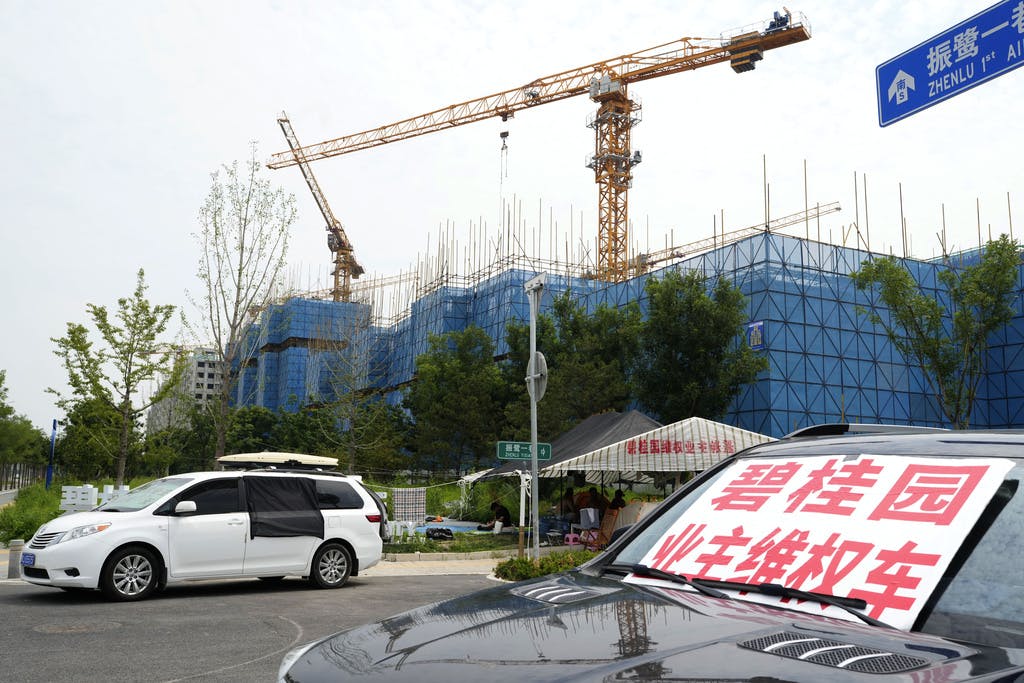China’s Communism Is Financed With Fiat Money
The moment of reckoning for the mandarins at Beijing intertwines both a debt crisis and a monetary crisis and raises questions over the honesty of its money.

Communist China’s struggle to shore up its yuan as it contends with a growing meltdown in its housing markets is a reminder, as it was during America’s borrowing ceiling debacle, that today’s debt crises are intertwined with a monetary crisis. This is a “moment of reckoning,” says Zhou Xin of the South China Morning Post, as the bubble caused by the “monetization” of China’s real estate market looks to be popping.
One of China’s premier problems, in an echo of the inflation of asset prices in America since we abandoned the gold standard, is that the run-up in real estate prices is denominated in a fiat currency — the yuan — with no basis in real value, like gold or silver. So while Mr. Zhou notes that the rise of China’s real estate market in the last 25 years seemed to be “one of the most phenomenal wealth-creation stories in history,” he now sees “signs the party is coming to an end.”
Or, it could be said, there was less there than the fiat currency could fetch.
The Financial Times points to “alarm among observers” of China’s economy, especially after missed bond payments by developer Country Garden and fears over private wealth manager Zhongzhi. The “secretive shadow banking giant,” Bloomberg says, has missed payments owed to customers, exposing “hidden financial dangers.” The firm’s troubles could prove to be “the canary in the coal mine,” one analyst tells the FT, evoking fears of a “Lehman moment.”
Zhongzhi’s troubles have “sparked protests” in China, Bloomberg reports, prompting police “to order disgruntled clients not to go public in their desperation to recoup losses.” Another real estate giant, Evergrande, is “struggling to avoid defaulting on $340 billion in debt,” AP says. JPMorgan analysts are warning of “a vicious cycle.” This is the context in which China is pouring more than $100 billion, the FT reports, in an effort to stop a slide in the Yuan.
On Monday, China’s central bank is expected “to make the biggest cuts of the year” to interest rates, the FT reports, to stimulate the troubled economy. The authorities, too, are eyeing cuts to “foreign-exchange reserve requirements,” Bloomberg says, as a last-ditch effort to “prevent a rapid depreciation in the currency.” They also want “state-owned banks to step up intervention in the currency market,” as a “broader sense of gloom” is spreading.
The “yuan is tumbling toward the weakest level since 2007,” Bloomberg reports, a black eye for the Chinese currency at a time when the Beijing regime is among those touting efforts to develop an alternative to the dollar as a vehicle for global trade. Yet it’s hard to see the troubles of China’s yuan as a vindication for the greenback. The dollar may appear strong by contrast. Yet both the yuan and the dollar are fiat currencies with no intrinsic value.
President Trump alludes to this in his recent interview with our Lawrence Kudlow. In “a keen insight about money,” Mr. Kudlow reports, Mr. Trump spoke of protecting a strong dollar — though as president he backed sub-zero interest rates that hardly bolstered the greenback. “I’m not just talking about the value of our currency,” Mr. Trump said. “I’m talking about our currency being used throughout the world,” adding “We have something that’s very powerful and that’s our dollar all over.”
It’s true that in comparison to other fiat currencies, the dollar may be riding high. Yet it is close to a historic low in terms of the classic measure of monetary value, gold. When President Nixon abandoned the last vestige of the gold standard by breaking America’s commitment under Bretton Woods in 1971, the dollar was defined as a 35th of an ounce of gold. It has since shed some 98 percent of its value, plummeting to an 1,888th of an ounce.
The gold standard’s end led to America’s twinned spiral of inflation and debt. Requiring dollars to be convertible at a legally fixed rate into silver or gold was a brake on spending and borrowing. The Fed now creates billions of fiat dollars with mere keyboard strokes, creating what we’ve called the “illusion of wealth.” The same point applies to the property bubble under China’s fiat yuan. For both nations, restoring real growth requires a return to honest money.

